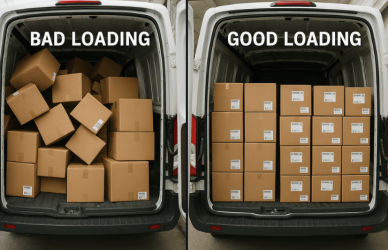In the evolving landscape of last-mile delivery, understanding the Department of Transportation (DOT) regulations is crucial, even for drivers without a Commercial Driver’s License (CDL). Operating a commercial motor vehicle (CMV) over 10,000 pounds gross vehicle weight rating (GVWR) brings specific responsibilities. This guide breaks down the essential DOT requirements for non-CDL last-mile delivery drivers in 2025.
Driver Qualification File (DQF) Essentials
Employers must maintain a Driver Qualification File for each non-CDL driver, ensuring compliance with federal regulations. Key components include:
- Employment Application: Detailed work history for the past three years, including driving violations and accidents.
- Motor Vehicle Record (MVR): Obtained at hiring and annually thereafter to assess driving history.
- Previous Employment Verification: Confirmation of past employment, focusing on safety performance.
- Road Test Certification: Proof of driving competence, unless exempted by prior experience.
- Medical Examiner’s Certificate (MEC): Valid documentation of physical fitness to operate a CMV.
These records must be retained for the duration of employment and for three years post-termination, as stipulated in 49 CFR 391.51.eCFR.
Medical Certification Requirements
Non-CDL drivers operating CMVs must pass a DOT physical examination every two years. This exam assesses the driver’s physical and mental fitness to operate a commercial vehicle safely. The examination must be conducted by a certified medical examiner listed in the National Registry of Certified Medical Examiners. Drivers must carry a physical copy of their Medical Examiner’s Certificate and provide a copy to their employer. Employers are responsible for retaining this certificate in the DQF and monitoring expiration dates to ensure compliance. Notably, as of June 2025, non-CDL drivers are not included in the new FMCSA integration rule and, thus, must continue to carry and submit physical copies of their medical certificates.
Hours of Service (HOS) Regulations
Non-CDL drivers are subject to the same Hours of Service regulations as CDL drivers, with certain exceptions:
- Standard HOS Rules: Drivers may drive a maximum of 11 hours after 10 consecutive hours off duty.
- 14-Hour Limit: Drivers may not drive beyond the 14th consecutive hour after coming on duty, following 10 consecutive hours off duty.
- Short-Haul Exemption: Drivers operating within a 150-air-mile radius and returning to the same work reporting location within 14 hours may be exempt from maintaining a Record of Duty Status (RODS), provided specific conditions are met.
- 16-Hour Short-Haul Exception: Non-CDL drivers who meet the short-haul exemption criteria may extend their on-duty period to 16 hours once every seven consecutive days, under certain conditions.
Drug and Alcohol Testing
While DOT regulations do not mandate drug and alcohol testing for non-CDL drivers, employers may implement their own testing policies, ensuring they comply with state and federal employment laws. It’s important to note that non-CDL drivers should not be included in the DOT random testing pool designated for CDL drivers.
Vehicle Inspection Requirements
Non-CDL drivers must perform pre-trip and post-trip inspections to ensure the vehicle is safe to operate. Employers should maintain records of these inspections as part of their compliance documentation.
Recordkeeping and Compliance
Maintaining accurate and up-to-date records is crucial for compliance. Employers should regularly audit their files to ensure all required documentation is present and current. Non-compliance can result in penalties and affect the company’s safety rating.
Understanding and adhering to DOT regulations is essential for non-CDL last-mile delivery drivers. Compliance ensures legal operation and the safety of drivers and the public. Staying informed about current requirements helps maintain a smooth and efficient delivery operation.








